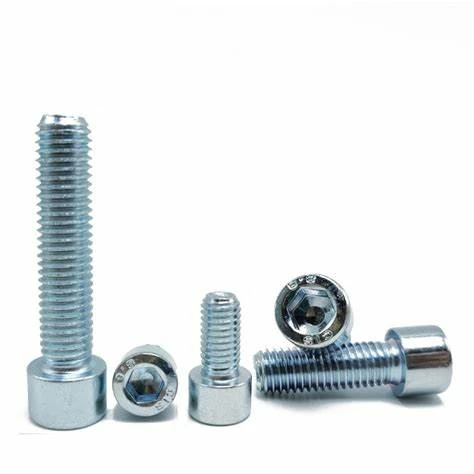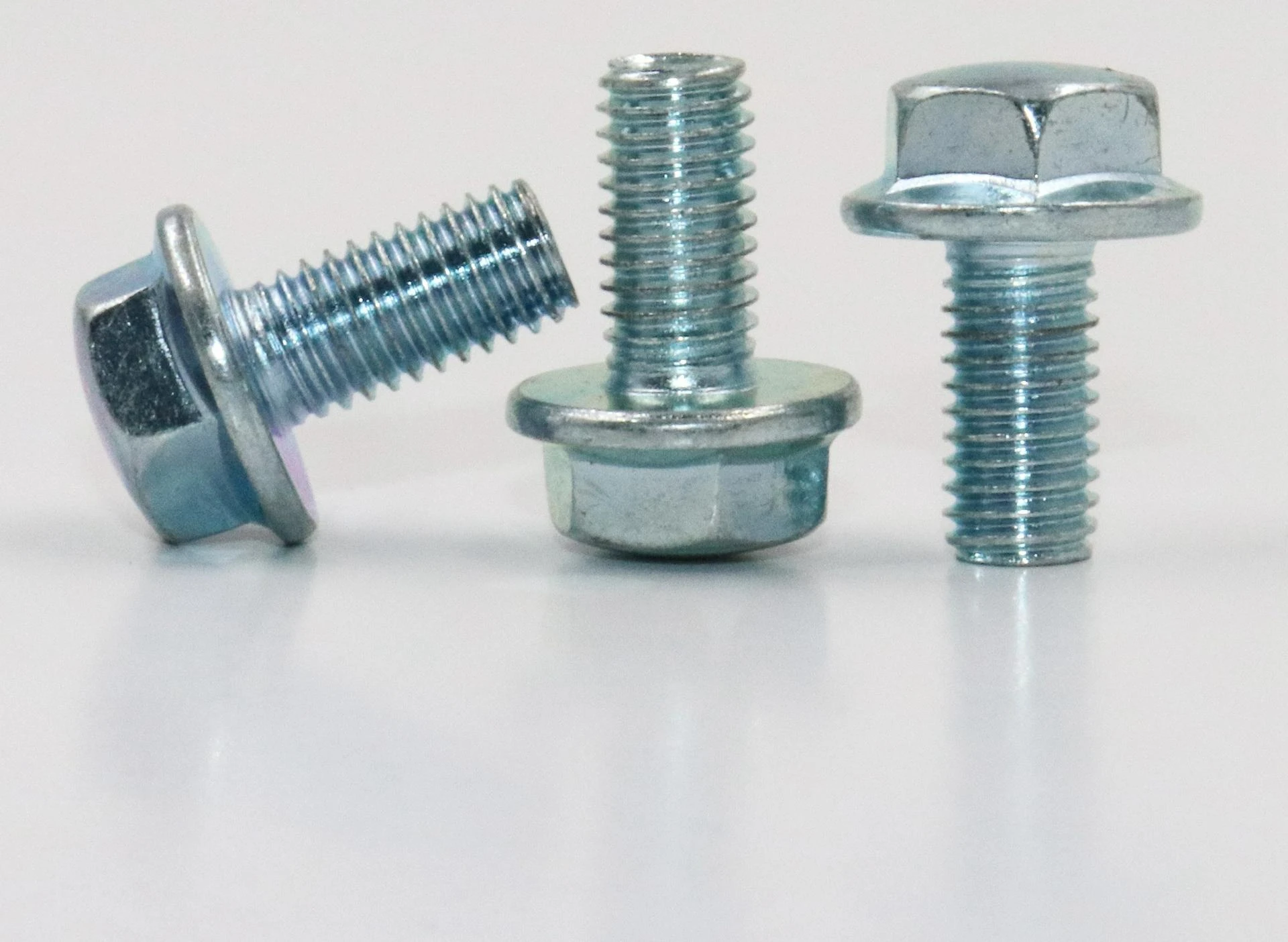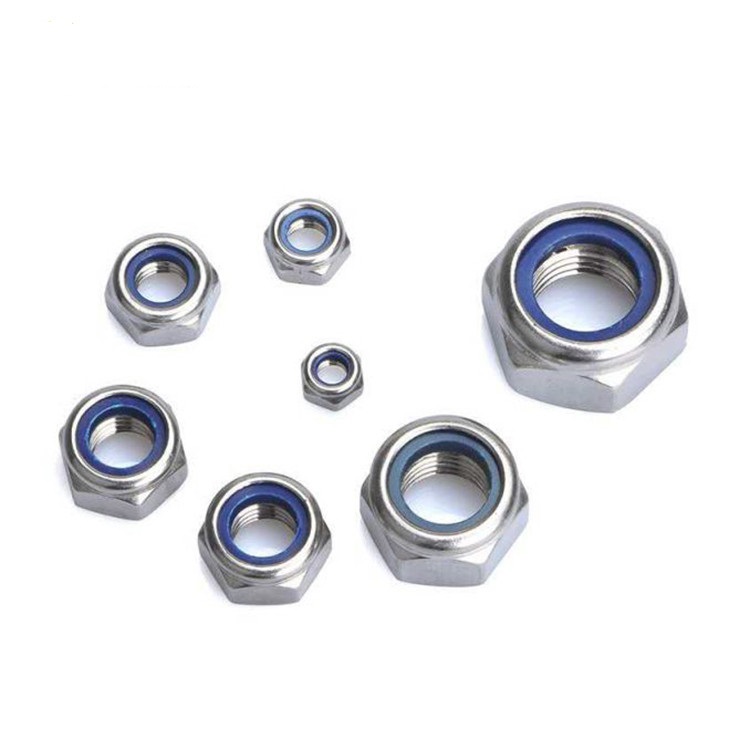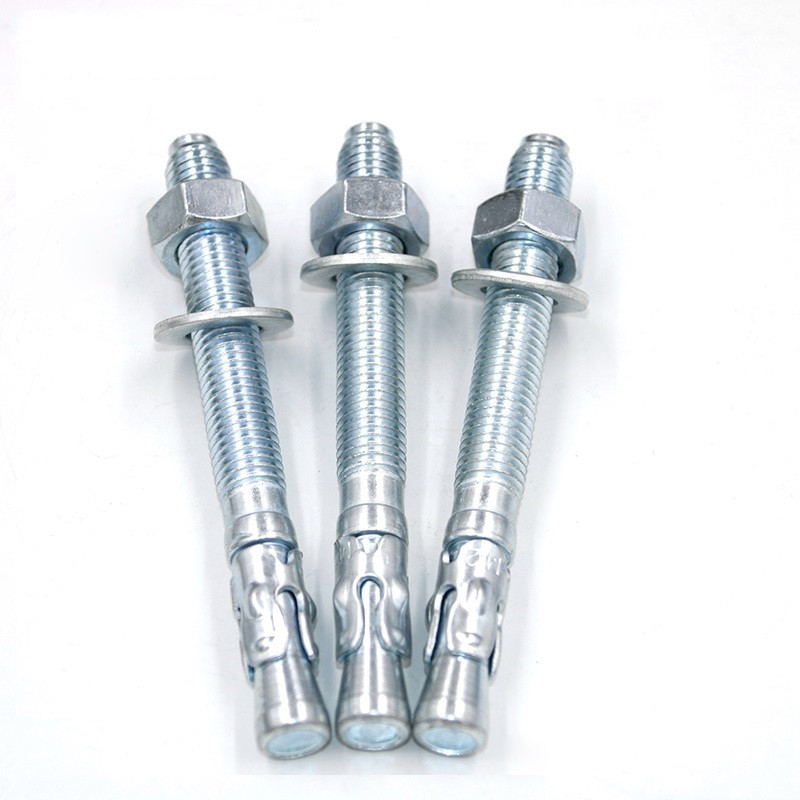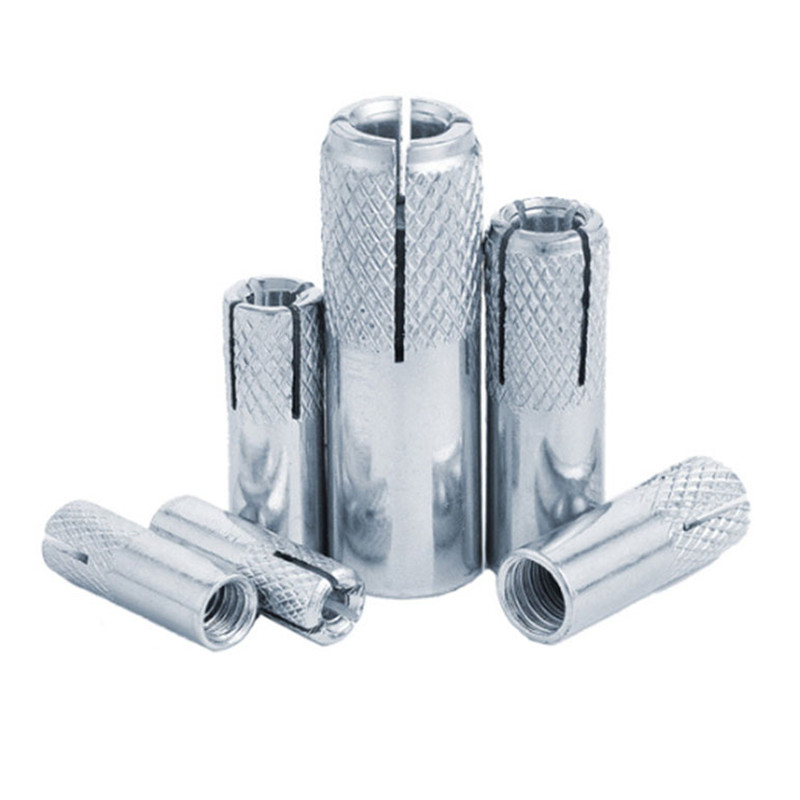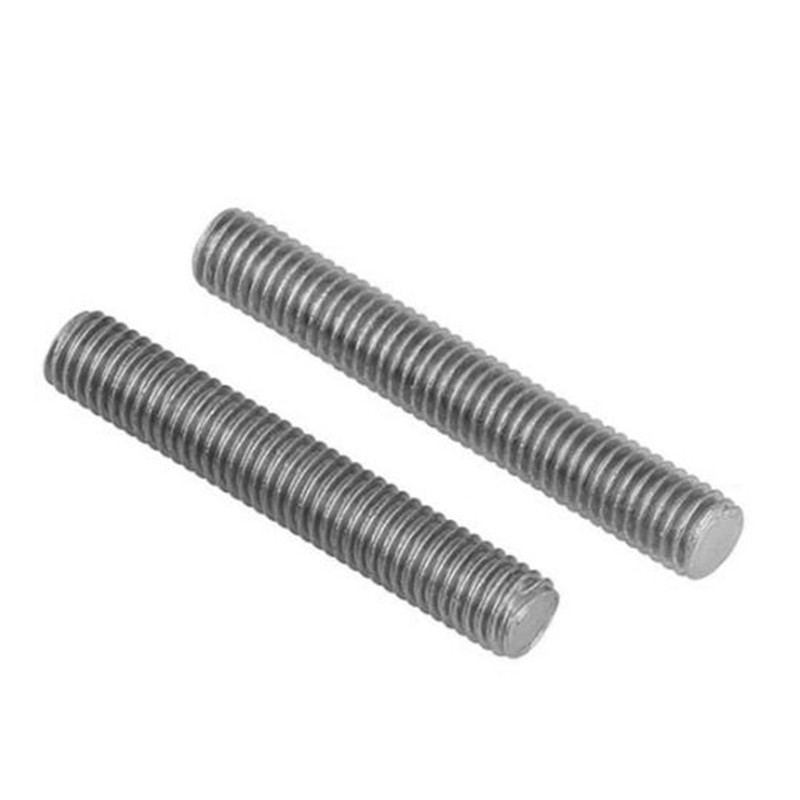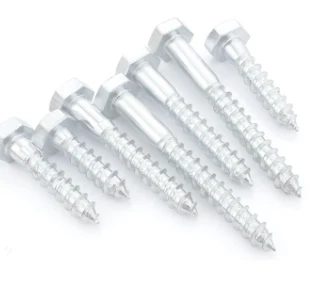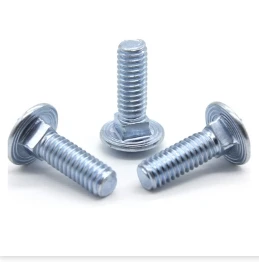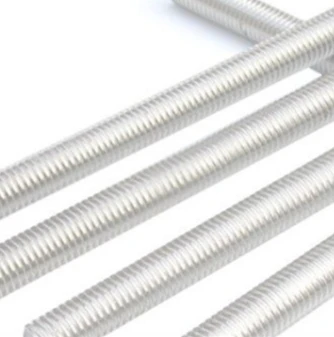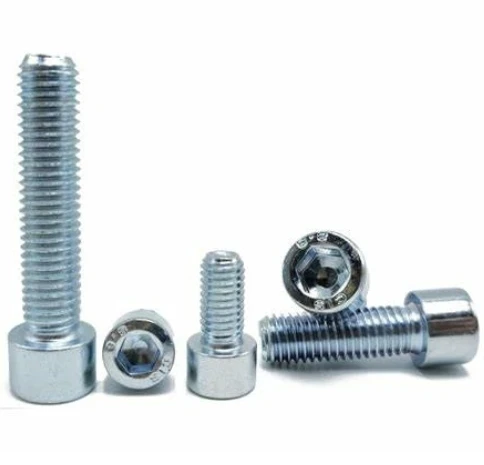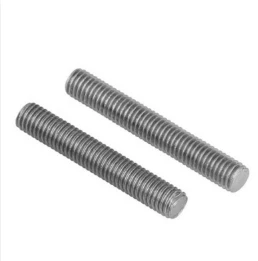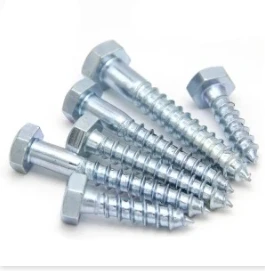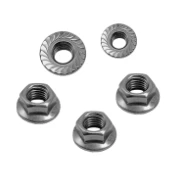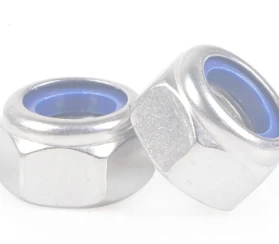In the evolving landscape of construction and woodworking, the demand for robust, reliable, and durable fastening solutions is paramount. Among the diverse array of fasteners, the hex head timber screw stands out as a critical component, offering exceptional holding power and ease of installation for heavy-duty applications. These specialized screws, often referred to as timber hex screws or hex screws for wood, are engineered to provide superior structural integrity in timber constructions, from framing and decking to landscaping and marine environments. Their distinctive hexagonal head allows for high torque application, minimizing cam-out and ensuring a secure, lasting connection. This article delves into the technical intricacies, application versatility, and manufacturing excellence behind these essential fasteners, particularly focusing on the DIN571 Hex Head Wood Screw, a flagship product from HBTBLS, accessible at https://www.hbtbls.com/wood-screw.html.
Industry Trends and the Growing Demand for Robust Timber Fasteners
The global construction industry is witnessing a significant shift towards sustainable building practices, with an increasing reliance on engineered wood products, mass timber, and modular construction. This trend directly fuels the demand for high-performance fasteners that can withstand diverse environmental conditions and structural loads. Hex head timber screws are at the forefront of this demand, providing the necessary strength and longevity. According to a report by Grand View Research, the global wood screws market size was valued at USD 1.7 billion in 2023 and is projected to grow, driven by residential and commercial construction activities. The emphasis is no longer just on basic fastening but on solutions that offer enhanced corrosion resistance, ease of installation, and extended service life, reducing overall project costs and environmental impact. Innovations in coating technologies and material science continue to push the boundaries of what hex head wood screws can achieve, making them indispensable in modern timber construction.
Technical Parameters of DIN571 Hex Head Wood Screw
The DIN571 standard specifies the dimensions and mechanical properties of hex head wood screws, ensuring interchangeability and performance consistency across manufacturers. These screws are characterized by their deep, coarse threads designed for optimal grip in wood, and their robust hexagonal head, which facilitates high torque driving. The most common materials are carbon steel (often C1022 for strength) and stainless steel (304 or 316 for superior corrosion resistance). HBTBLS's DIN571 Hex Head Wood Screw exemplifies these parameters, ensuring reliable performance.
Common Specifications for Hex Head Timber Screws (DIN571)
Below is a typical range of specifications you might find for DIN571 hex head timber screws, demonstrating the versatility in size and material to suit various applications. These parameters are crucial for engineers and builders to select the appropriate fastener for their structural requirements.
| Parameter | Description | Typical Range/Value | Unit |
|---|---|---|---|
| Nominal Diameter (D) | Major diameter of the screw thread | 5.0 to 20.0 | mm |
| Length (L) | Overall length from under the head to the tip | 20 to 300 | mm |
| Thread Type | Coarse thread for wood, self-tapping capability | Partial/Full Thread | N/A |
| Material | Primary material composition | Carbon Steel (C1022), Stainless Steel (304, 316) | N/A |
| Surface Finish | Coating for corrosion protection | Zinc Plated (Yellow/Blue), Hot Dip Galvanized (HDG), Mechanical Galvanized (M.G.), Black Oxide, Ruspert, Dacromet | N/A |
| Head Type | Shape of the screw head | Hexagonal | N/A |
| Tensile Strength | Maximum stress a material can withstand before breaking under tension (for carbon steel) | Min. 500 | MPa |
| Shear Strength | Resistance to forces tending to cause a deformation by slippage along a plane parallel to the applied force | Typically 60% of Tensile Strength | MPa |
| Hardness | Resistance to indentation (Vickers, Rockwell) | 250-320 HV1 (for carbon steel) | N/A |
Understanding these parameters is crucial for selecting the right hex screws for wood for a specific application, ensuring both structural integrity and longevity. HBTBLS provides comprehensive data sheets for its products, adhering to stringent international standards like ISO and ANSI.
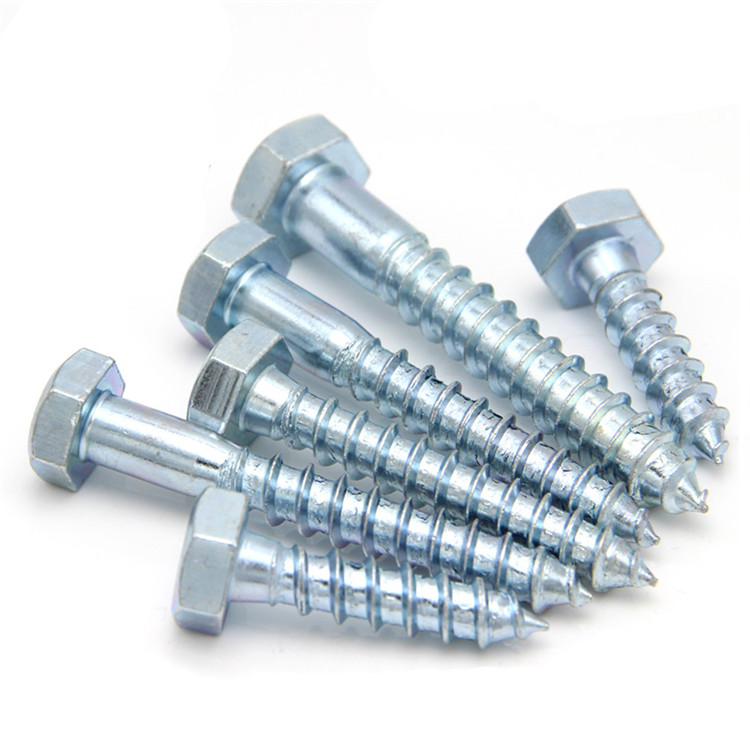
The Meticulous Manufacturing Process of Hex Head Timber Screws
The production of high-quality hex head timber screws is a sophisticated process that combines precision engineering with advanced metallurgy. HBTBLS employs a multi-stage manufacturing workflow, primarily utilizing cold forging and thread rolling techniques, ensuring superior mechanical properties and consistent quality. This rigorous process adheres to strict quality control checkpoints at every stage.
Crafting Excellence: Step-by-Step Process for Hex Head Timber Screws
- Wire Drawing: The journey begins with high-grade steel wire rods (e.g., C1022 carbon steel or 304/316 stainless steel). These rods are drawn through a series of dies to reduce their diameter to the precise dimension required for the specific screw size. This process strengthens the material and prepares it for subsequent forming operations.
- Cold Heading (Forming the Hex Head): In this crucial stage, the drawn wire is fed into a cold heading machine. Powerful dies strike the end of the wire at room temperature, plastically deforming it to form the distinctive hexagonal head. This cold working process not only shapes the head but also increases the material's strength and fatigue resistance in the head area, preventing common issues like head shearing during installation.
- Thread Rolling: Following head formation, the screw blank moves to the thread rolling machine. Instead of cutting threads, which can weaken the material, the threads are formed by rolling the blank between two hardened dies. These dies press the material, creating the external helical threads. This process ensures continuous grain flow, making the threads significantly stronger and more resistant to stripping and pull-out compared to cut threads. It also enhances the surface finish of the threads, contributing to smoother installation.
- Heat Treatment (for Carbon Steel): For carbon steel hex wood screw products, a precisely controlled heat treatment process is essential. This typically involves hardening (heating to a high temperature, then quenching) followed by tempering (reheating to a lower temperature). This process optimizes the screw's core hardness, tensile strength, and ductility, making it resistant to bending and breaking while maintaining adequate toughness. Stainless steel screws generally do not require heat treatment.
- Surface Treatment (Coating): To enhance corrosion resistance and aesthetics, the screws undergo various surface treatments. Common options include:
- Zinc Plating (Yellow or Blue Chromate): Provides basic corrosion resistance suitable for indoor or less aggressive outdoor environments.
- Hot-Dip Galvanizing (HDG): Offers a thick, durable zinc coating, ideal for severe outdoor and corrosive environments, enhancing the lifespan of the timber hex screw.
- Mechanical Galvanizing (M.G.): An alternative to HDG, providing a more uniform coating without hydrogen embrittlement risks.
- Ruspert / Dacromet Coatings: Multi-layer, ceramic-metallic coatings offering superior corrosion resistance, often outperforming traditional galvanization in salt spray tests, crucial for long-term outdoor applications.
- Black Oxide: Provides mild corrosion resistance and a decorative finish.
- Quality Inspection: Throughout the entire manufacturing chain, rigorous quality control checks are performed. This includes dimensional checks (head size, length, thread pitch), material hardness testing, tensile strength tests, pull-out strength tests, and corrosion resistance tests (e.g., salt spray testing according to ASTM B117 or ISO 9227 standards). Only screws meeting stringent international standards (e.g., ISO 9001, ANSI B18.2.1, DIN 571) are approved for packaging.
- Packaging: The finished hex screws for wood are carefully counted, sorted, and packaged according to customer requirements, ready for shipment.
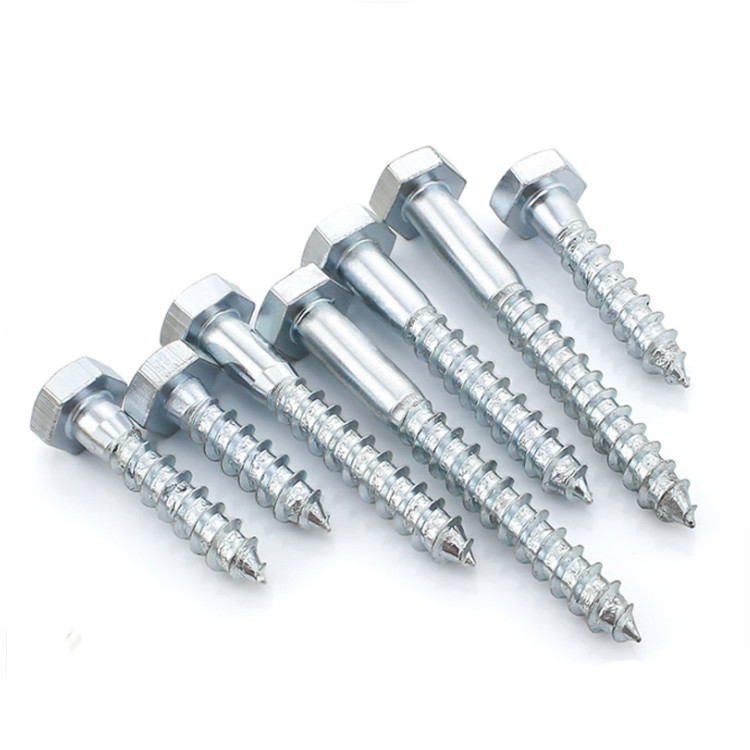 Figure 1: Simplified Manufacturing Flow of a Hex Head Timber Screw. Each arrow represents a critical step contributing to the final product's quality and performance.
Figure 1: Simplified Manufacturing Flow of a Hex Head Timber Screw. Each arrow represents a critical step contributing to the final product's quality and performance.
This detailed process ensures that every DIN571 Hex Head Wood Screw from HBTBLS possesses the desired mechanical properties, dimensional accuracy, and corrosion resistance, contributing to an extended service life and enhanced structural integrity in various applications.
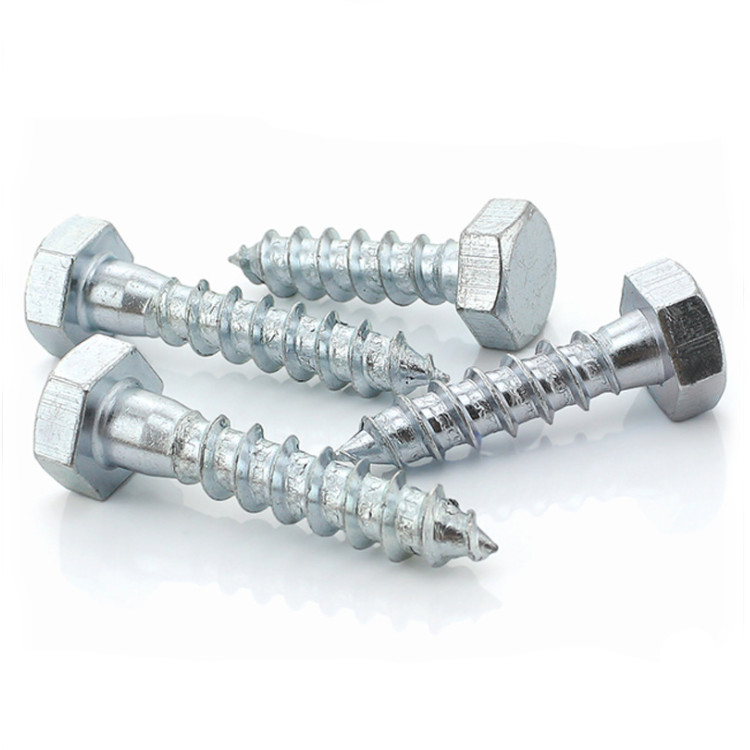
Applicable Industries and Application Scenarios
The versatility and strength of hex head timber screws make them indispensable across a wide range of industries and applications. Their design allows for high load-bearing capacity and resistance to pull-out, making them ideal for heavy-duty timber connections.
- Construction Industry:
- Heavy Timber Framing: Essential for connecting large timber beams, posts, and trusses in both residential and commercial buildings. They provide robust structural connections that can withstand significant loads.
- Decking and Outdoor Structures: Widely used for fastening deck boards to joists, securing pergolas, gazebos, and fencing. Hot-dip galvanized or stainless steel hex head wood screws are preferred here due to their excellent corrosion resistance against weather elements.
- Roofing: For securing purlins, rafters, and other structural components in timber roof constructions.
- Log Homes: Crucial for assembling log structures, ensuring tight and durable connections between logs.
- Landscaping and Outdoor Infrastructure:
- Retaining Walls: Used in timber retaining walls to secure heavy timbers, preventing soil erosion.
- Playground Equipment: Ensures the safety and stability of wooden playground structures, requiring fasteners with high shear and pull-out strength.
- Boardwalks and Pathways: Particularly in natural parks or coastal areas, requiring fasteners that can endure constant exposure to moisture and environmental stressors.
- Marine and Coastal Applications:
- Docks, Piers, and Jetties: Stainless steel hex head timber screws (Grade 316) are critical for these applications due to their exceptional resistance to saltwater corrosion, ensuring the long-term integrity of marine structures.
- Boat Building (Wooden): Used in certain structural elements of wooden boats where strong, reliable timber connections are needed.
- Industrial Packaging and Crating:
- For assembling heavy-duty wooden crates and pallets used for transporting machinery and large industrial components. The strength of the hex screws for wood ensures that contents remain secure during transit.
- Utility and Telecommunications:
- Securing wooden utility poles to cross-arms or other wooden attachments, where high strength and resistance to environmental factors are crucial.
In all these scenarios, the large bearing surface under the head of a hex head timber screw prevents pull-through, while its robust thread design ensures maximum withdrawal resistance, making it a superior choice compared to conventional nails or smaller screws.
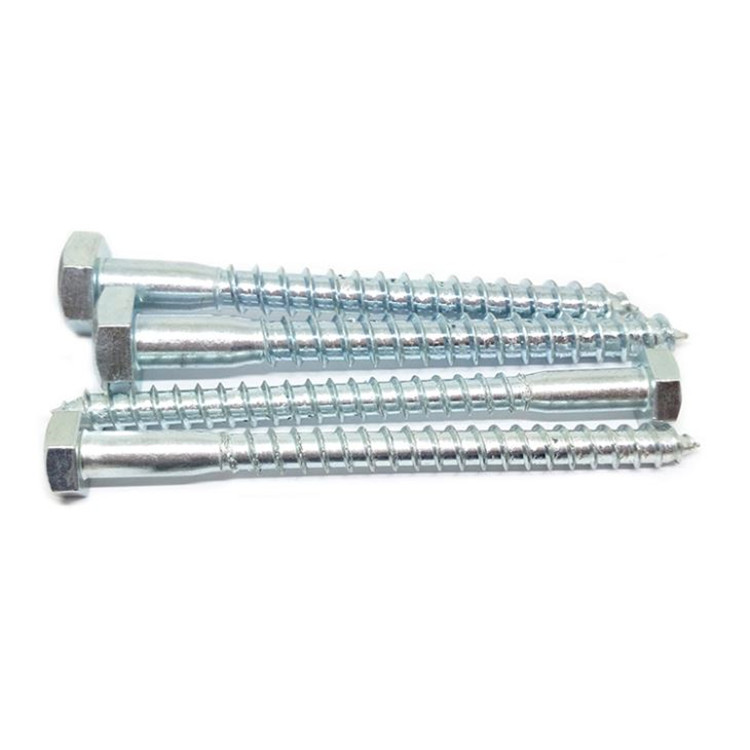
Technical Advantages of DIN571 Hex Head Wood Screws from HBTBLS
Choosing the right fastener significantly impacts the safety, durability, and cost-effectiveness of any timber project. HBTBLS's DIN571 Hex Head Wood Screw offers several distinct technical advantages that set it apart in the market:
- Superior Holding Power and Withdrawal Resistance: The aggressive, deep threads are specifically designed to maximize engagement with wood fibers, providing exceptional pull-out resistance. This is critical for structural applications where fasteners must withstand significant tension and shear forces. The larger diameter shank also contributes to higher shear strength compared to standard wood screws.
- Enhanced Torque Capability and Reduced Cam-Out: The hexagonal head allows for the application of considerably higher torque using wrenches or impact drivers without stripping the drive recess. This reduces cam-out (where the driver slips out of the screw head) and ensures a full, secure seating of the screw, leading to faster and more reliable installation.
- Exceptional Corrosion Resistance: HBTBLS offers a range of advanced surface treatments, including hot-dip galvanization (HDG), mechanical galvanization, and specialized multi-layer coatings like Ruspert or Dacromet, in addition to stainless steel options (304, 316). These coatings provide superior protection against rust and degradation in harsh environments, including saltwater, industrial pollutants, and extreme weather, significantly extending the service life of the hex head timber screw and the structure it secures.
- Durability and Longevity: Through precise cold heading, thread rolling, and meticulous heat treatment (for carbon steel versions), HBTBLS ensures that its hex wood screws possess optimal hardness, ductility, and tensile strength. This makes them highly resistant to bending, breaking, and fatigue over time, reducing the need for maintenance or replacement.
- Reduced Wood Splitting: While pre-drilling is often recommended for larger diameters, the sharp point and optimized thread design help to minimize wood splitting, especially in denser timber, making installation smoother and protecting the integrity of the wood.
- Consistent Quality and Reliability: Adherence to international standards like DIN571, ISO, and ANSI, coupled with stringent in-house quality control, guarantees that every hex screw for wood manufactured by HBTBLS meets precise specifications for dimensions, mechanical properties, and finish. This consistency ensures reliable performance across all applications.
These combined advantages make HBTBLS's DIN571 Hex Head Wood Screw a premium choice for professionals seeking performance, durability, and peace of mind in their timber construction projects.
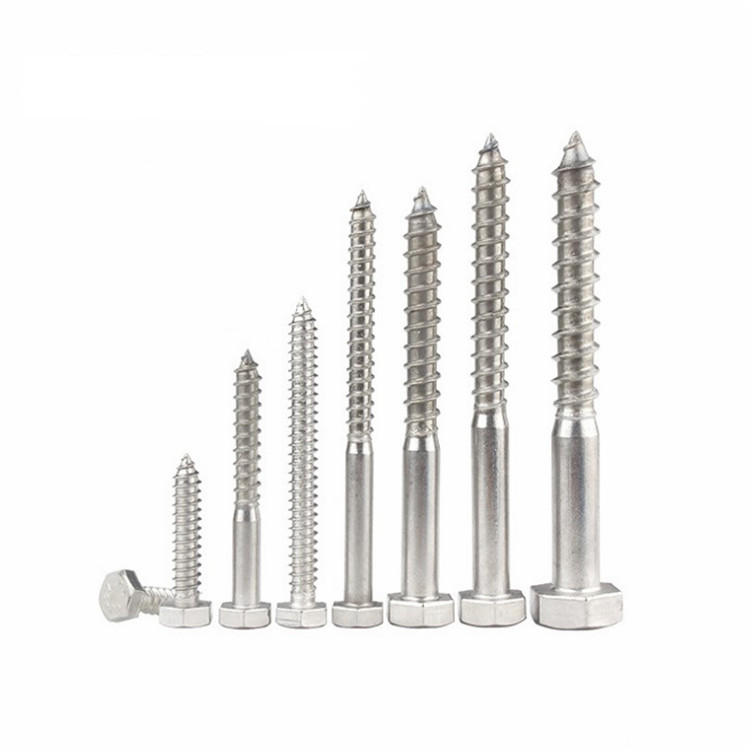
Manufacturer Comparison: HBTBLS vs. Generic Suppliers
In the competitive market of fasteners, selecting a reputable manufacturer is as crucial as choosing the right product. While many suppliers offer hex head timber screws, the differences in quality, adherence to standards, and customer support can be substantial. HBTBLS distinguishes itself through its unwavering commitment to quality, engineering excellence, and customer satisfaction.
Comparison Table: HBTBLS DIN571 Hex Head Wood Screw vs. Generic Supplier
| Feature/Aspect | HBTBLS DIN571 Hex Head Wood Screw | Generic Supplier A (Cost-focused) |
|---|---|---|
| Material Quality | Premium grade C1022 Carbon Steel, 304/316 Stainless Steel; Traceable raw material origins. | Often unverified or lower-grade steel; may lack consistent mechanical properties. |
| Manufacturing Process | Precise Cold Heading & Thread Rolling; Controlled Heat Treatment; Minimizes material stress and maximizes strength. | May use less precise methods, potentially leading to weaker heads or threads. Inconsistent quality. |
| Corrosion Protection | Diverse range of high-performance coatings (HDG, M.G., Ruspert, Dacromet) with certified salt spray test results (e.g., >1000 hours for Ruspert). | Basic zinc plating; limited options for harsh environments; often lacks performance certification. |
| Adherence to Standards | Strict compliance with DIN571, ISO, ANSI, ASTM; ISO 9001 certified manufacturing. | May claim compliance but lack verifiable certifications or consistent adherence. |
| Quality Control & Testing | In-house laboratory with comprehensive testing (tensile, shear, hardness, pull-out, salt spray); Batch traceability. | Minimal or outsourced testing; relies on basic visual inspection; less batch traceability. |
| Product Performance | Consistent high strength, superior pull-out resistance, long service life, reliable installation. | Inconsistent strength, prone to shearing, stripping, or premature corrosion, leading to project failures. |
| Customization & Support | Offers bespoke solutions for dimensions, materials, and coatings; Dedicated technical support. | Limited or no customization; basic customer service with little technical expertise. |
| Experience & Reputation | Over 20 years in the fastener industry; Proven track record with major construction projects globally. | Newer or less established; fewer verifiable long-term project successes. |
Choosing HBTBLS means investing in reliability, safety, and long-term performance for your projects, backed by decades of specialized experience in producing high-quality hex head wood screws.
Customization Solutions for Specific Project Needs
Recognizing that every construction project has unique requirements, HBTBLS offers comprehensive customization solutions for its hex head timber screws. This flexibility ensures that clients can obtain fasteners perfectly tailored to their specific application, material compatibility, and environmental conditions. Our engineering team works closely with clients to develop bespoke solutions, extending beyond standard DIN571 specifications.
- Tailored Dimensions: While standard lengths and diameters are available, we can produce custom lengths (e.g., for very thick timber elements) and specific diameters to meet unique load requirements or existing hole patterns. This includes specialized designs for flat head hex wood screw variations where a flush finish is desired, though the primary product is the standard hex head.
- Material Selection: Beyond standard carbon and stainless steel, we can explore other alloys or grades if a project demands exceptional properties, such as enhanced ductility or extreme temperature resistance.
- Specialized Coatings: For projects in highly corrosive environments (e.g., chemical plants, coastal regions), we can apply specialized coatings that offer superior protection against specific chemical agents or prolonged moisture exposure, tested to rigorous industry standards like ASTM B117 salt spray tests for extended periods (e.g., 2000 hours+).
- Thread Design Optimization: For particular wood types or composite materials, minor adjustments to thread pitch or profile can optimize withdrawal resistance and minimize splitting, ensuring the best possible connection.
- Packaging Solutions: From bulk industrial packaging to custom quantities for specific project phases, we offer flexible packaging options to streamline logistics and reduce waste on site.
Our commitment to customization underscores our dedication to providing not just products, but comprehensive fastening solutions that integrate seamlessly into complex engineering designs, ensuring optimal performance of every timber hex screw.
Application Cases and Customer Feedback
The real-world performance of HBTBLS's hex head timber screws is best illustrated through successful application cases and positive customer testimonials. These examples demonstrate the tangible benefits of our products in diverse and demanding environments.
Case Study 1: Large-Scale Timber Frame Residential Complex
Project: A multi-story residential complex utilizing prefabricated heavy timber frames in a seismic zone. Challenge: Required fasteners that could withstand significant shear and tensile forces, provide high pull-out resistance, and be installed rapidly to meet tight construction schedules, while ensuring long-term structural integrity. Solution: HBTBLS supplied thousands of custom-length DIN571 Hex Head Wood Screws (zinc-plated and hot-dip galvanized for external elements). The high torque capability of the hex head facilitated quick installation with impact drivers, significantly reducing labor time. The robust design ensured secure connections, passing rigorous structural integrity tests. Outcome: The project was completed on schedule, and post-construction inspections confirmed the exceptional stability and durability of the timber frame, largely attributed to the reliable fastening system.
Case Study 2: Coastal Public Boardwalk Renovation
Project: Renovation of a 2km public boardwalk along a highly corrosive coastal environment, exposed to saltwater spray and strong winds. Challenge: The previous fasteners had failed prematurely due to corrosion, leading to safety hazards and high maintenance costs. New fasteners needed superior corrosion resistance and long-term durability in marine conditions. Solution: HBTBLS provided Grade 316 Stainless Steel Hex Head Wood Screws with a specialized passive film treatment for enhanced saltwater resistance. These hex screws for wood were chosen for their proven performance in similar harsh environments. Outcome: Two years post-renovation, the boardwalk remains in excellent condition with no signs of fastener corrosion or loosening, drastically reducing maintenance cycles and ensuring public safety. The client noted a significant improvement in the longevity of the structure.
Customer Feedback
"We've been using HBTBLS's hex head wood screws for our deck constructions for over five years, and the quality is consistently superior. The ease of installation, combined with their incredible holding power, has not only sped up our projects but also given us confidence in the long-term durability of our work. Their hot-dip galvanized screws are truly exceptional for outdoor use."
— John M., Construction Manager, GreenBuild Solutions
"For our bespoke furniture and heavy timber elements, precision and strength are non-negotiable. HBTBLS's technical team helped us specify the perfect timber hex screw for a unique application, ensuring a flawless finish and robust connection. Their responsiveness and expertise are unmatched."
— Sarah L., Head Designer, Artisan Woodworks
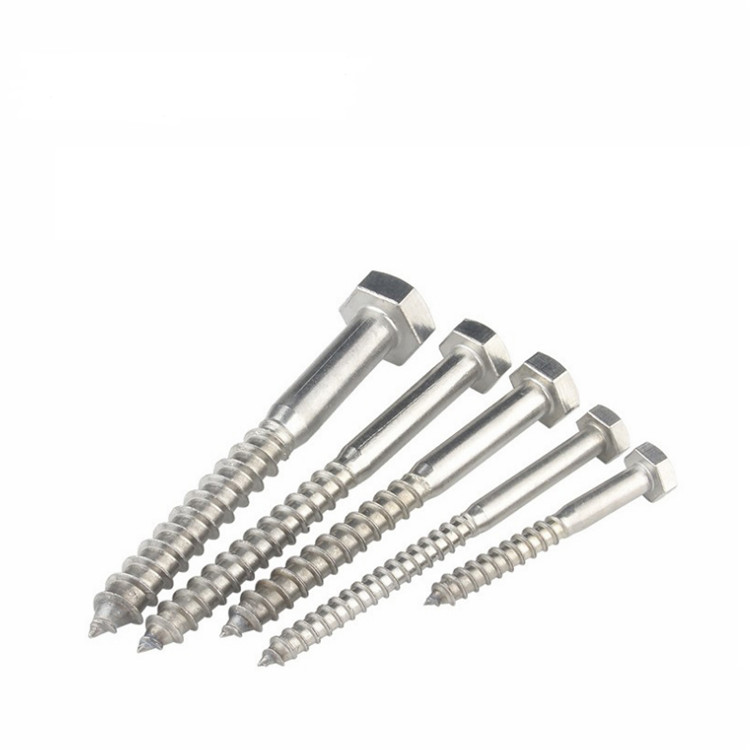
Trust and Reliability: Delivery, Warranty, and Customer Support
At HBTBLS, building trust with our clients is paramount. This extends beyond product quality to encompass transparent delivery processes, robust warranty commitments, and responsive customer support. Our commitment to trustworthiness (T in ) ensures a seamless experience from inquiry to post-purchase support.
- Efficient Delivery Cycle: We understand the importance of timely delivery in project management. For standard DIN571 Hex Head Wood Screw products from our inventory, typical delivery lead times range from 1 to 2 weeks. For customized orders or larger quantities requiring production, the delivery cycle is typically 4 to 6 weeks, depending on complexity and order volume. We provide clear, upfront communication regarding production and shipping schedules.
- Comprehensive Quality Assurance and Warranty: All HBTBLS fasteners undergo stringent quality control checks at every manufacturing stage, adhering to ISO 9001 standards. We stand behind the quality of our DIN571 Hex Head Wood Screw products with a robust warranty, typically covering materials and workmanship for a period of 5 years under normal usage conditions. This commitment reflects our confidence in the durability and performance of our fasteners.
- Dedicated Customer Support: Our team of experienced professionals is committed to providing exceptional customer service.
- Pre-Sales Consultation: We offer expert advice on product selection, technical specifications, and custom solutions to ensure you choose the optimal hex head timber screw for your project.
- Technical Support: Our engineers are available to address any technical queries, provide installation guidance, and troubleshoot potential issues.
- After-Sales Service: We ensure prompt and effective resolution of any post-purchase concerns, maintaining open communication channels.
- Years of Service and Authority: With over two decades of specialized experience in the fastener industry, HBTBLS has established itself as an authoritative and reliable manufacturer. Our long-standing relationships with leading construction companies and distributors worldwide attest to our consistent product quality and service excellence. We are certified to ISO 9001, underscoring our commitment to international quality management standards.
Professional FAQ on Hex Head Timber Screws
Q1: What is the primary difference between a hex head timber screw and a traditional lag screw?
A1: While often used interchangeably, a hex head timber screw (like DIN571) typically refers to a robust, self-tapping screw designed specifically for wood applications, often featuring a sharper point and optimized thread for better penetration and pull-out resistance without extensive pre-drilling. Traditional lag screws (or lag bolts) generally require a pilot hole and are often used with a washer and sometimes a nut (though in wood, they act as large wood screws). Modern hex head timber screws often integrate advanced thread designs and coatings for superior performance and easier installation compared to older lag screw designs.
Q2: What materials are your hex head wood screws typically made from, and why?
A2: Our hex head wood screws are primarily made from high-grade C1022 carbon steel for excellent strength and formability, and 304 or 316 stainless steel for superior corrosion resistance. Carbon steel is chosen for its high tensile and shear strength, suitable for heavy structural loads, especially after heat treatment. Stainless steel grades are selected for their inherent resistance to rust and chemical exposure, making them ideal for outdoor, marine, or corrosive industrial environments, ensuring longevity for the timber hex screw.
Q3: What types of coatings are available for corrosion resistance, and how do they perform?
A3: We offer several coatings:
- Zinc Plating: Basic protection for indoor or dry outdoor conditions (e.g., 48-72 hours salt spray resistance).
- Hot-Dip Galvanizing (HDG): Thick zinc coating for severe outdoor and highly corrosive environments, offering excellent long-term protection (e.g., 1000+ hours salt spray).
- Mechanical Galvanizing: Similar protection to HDG but applied mechanically, reducing hydrogen embrittlement risks.
- Ruspert/Dacromet Coatings: Advanced ceramic-metallic coatings offering superior corrosion resistance, often exceeding 1000-2000 hours in salt spray tests, ideal for extreme conditions.
Q4: How do I determine the correct size (diameter and length) for my hex head timber screw application?
A4: Determining the correct size depends on several factors: the thickness of the timber being fastened, the type of wood (density), and the load requirements. Generally, the screw should penetrate the receiving member by at least two-thirds of its thickness, or ideally, 6 to 8 times the screw's diameter. For critical structural applications, engineering calculations based on timber properties and expected loads are recommended, adhering to building codes and standards like ASTM D1761 for wood fasteners.
Q5: Is pre-drilling required for installing your hex head wood screws?
A5: For smaller diameter hex head wood screws (e.g., below 8mm), pre-drilling may not be strictly necessary in softer woods due to their sharp points and aggressive threads. However, for larger diameters (e.g., 8mm and above) or when working with hardwoods or sensitive timbers, pre-drilling a pilot hole (slightly smaller than the screw's core diameter) is highly recommended. This prevents wood splitting, reduces installation torque, and ensures optimal screw performance and integrity of the hex head timber screw.
Q6: Can your flat head hex wood screw variations be used for structural applications?
A6: While our primary product is the traditional hex head, we do offer customization for flat head hex wood screw designs if requested. Flat head screws are designed to sit flush with the surface, offering a cleaner aesthetic. However, for heavy structural applications, the standard hex head often provides a larger bearing surface, distributing load more effectively and minimizing pull-through. Structural suitability for a flat head variation would depend on its specific design, material, and the load requirements, and would need to be evaluated on a case-by-case basis with our engineering team.
Q7: What specific industry standards do your hex screws for wood meet?
A7: Our hex screws for wood are manufactured in strict compliance with international standards to ensure quality and reliability. Key standards include:
- DIN571: The German standard for Hexagon Head Wood Screws, which specifies dimensions and requirements.
- ISO (International Organization for Standardization): We adhere to ISO 9001 for quality management systems in our manufacturing process.
- ANSI (American National Standards Institute) / ASME (American Society of Mechanical Engineers): Relevant standards like ANSI B18.2.1 for square and hex bolts and screws are considered for dimensional aspects, though DIN571 is the primary wood screw standard.
- ASTM (American Society for Testing and Materials): We follow ASTM standards for material composition (e.g., ASTM A307 for carbon steel) and corrosion testing (e.g., ASTM B117 for salt spray).
For further technical insights and industry discussions on timber fasteners, you may find the following resources valuable:
Post time: жнів . 09, 2025 06:40


